Joseph Cheaney's "Tweed" Country Brogue Boots in Almond Scotch Grain
Mar 08, 2025
Joseph Cheaney and Sons is a long-time footwear manufacturer based in the fabled boot factory town of Northampton in England. Today, I’m taking a look at their “Tweed” brogue wingtip Country Boot.
It’s called the Tweed Boot after the River Tweed in the border region between Scotland and England. It is listed by Cheaney as a “brogue Country Boot”. It is a 6-inch boot with a Dainite sole, suitable for walking in the English country as well as in the city, being Goodyear welted with an all-round leather storm welt for additional water-resistant properties.

Built with three eyelets and four speed hooks in premium hand-burnished Scotch grain calf leather, this one is in a colour they call Almond. The brogue punching and edge-pinking in the wingtip panels are bold, emphasising the pebble grain of the uppers and leading to a more casual look than brogueing on smooth leather. The hand-painted patina on the mid-tan “almond” colour gives the already interesting pebbled Scotch grain even more interest.
The generous quarter pieces mean that they lace quite close together, giving a formal vibe even though it’s a Derby boot, and the overall package being a more casual Country boot.

The English use the term Country Boot, as a boot suitable for the more informal dressing outside of London, for “tramping” or hiking or more accurately, walking across rolling English countryside, and in the old days, attending country shooting parties and so on. While the term continues, it’s really outmoded, coming from the turn of the 20th century when gentlemen would leave London to weekend at their country homes and shoot and walk and wear less formal cityfied clothes.
The brogue version of a country boot is a style of low-heeled boot characterised by multiple pieces of sturdy leather uppers, decorative perforations called “broguing" and sometimes pinked serrated edges along the leather pieces' visible edges. Brogues were traditionally considered to be outdoor or country footwear as the perforations were originally intended to allow the upper to dry more quickly in wet climates. As such they were otherwise considered not appropriate for business occasions, but brogues are now considered appropriate in most contexts, at least, in the UK, and certainly while still called that by English bookmakers, there’s no real distinction between city and country boots anymore.
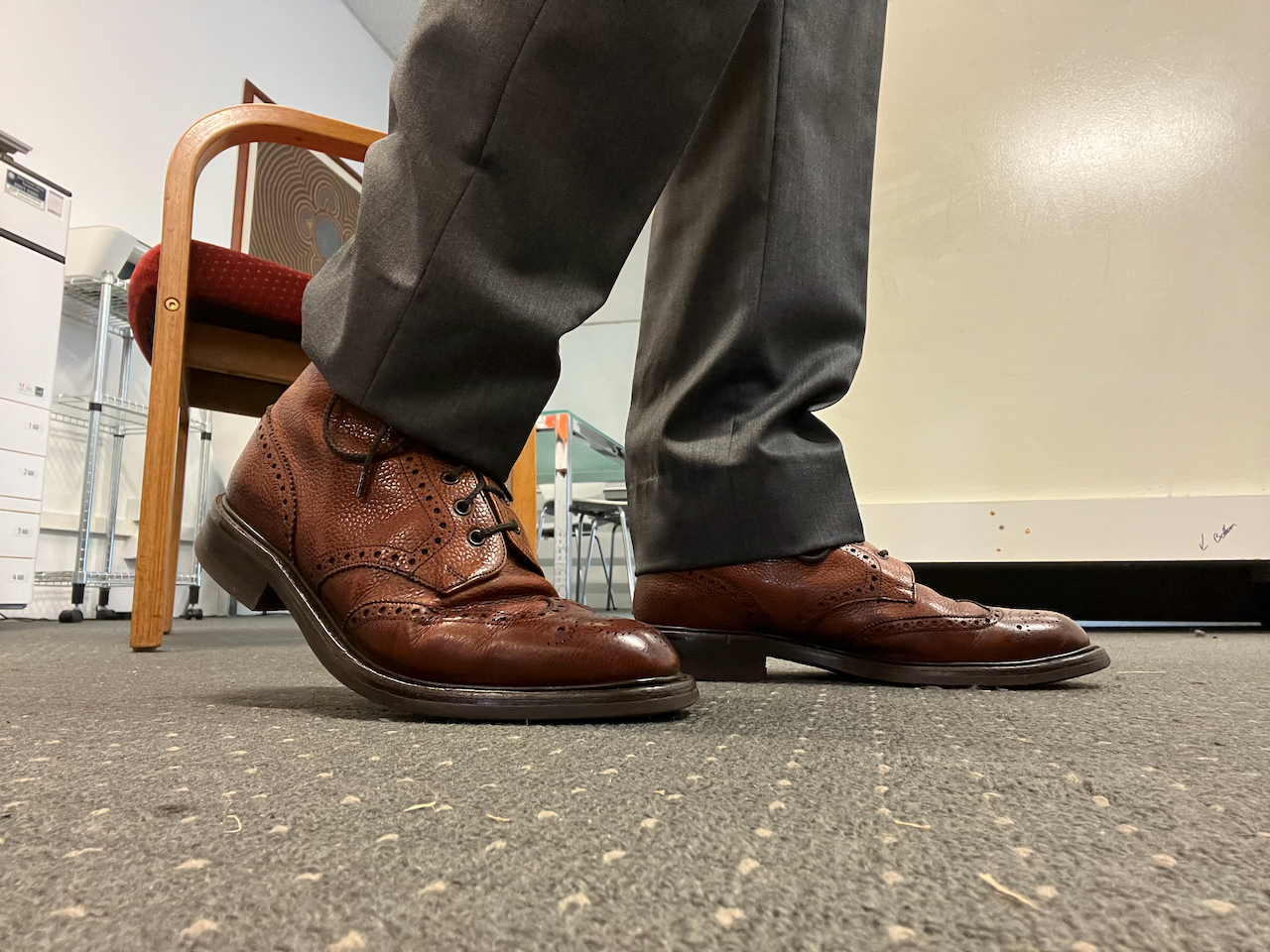
WHAT TO WEAR
Brogues wingtips - so called because of the multi pieces of leather forming what might look like wings - see my review of the Thursday Wingtip - brogue wingtips can be worn in most dress or casual occasions these days, especially post-COVID and the marked “casualisation” of office dress. So, this is a VERY versatile boot.
Maybe not as obvious to others, you CAN wear this with a suit, in grey or navy, allowing the tan to contrast against the darker colour of the suit.

You can also go to the extreme, and wear these with casual denim and a relaxed casual shirt, even a Henley and a leather jacket.

They will definitely work in what’s now trending as “high-low” dressing, in jeans, a dress shirt and a blazer.

But most of all, casual outfits in dark colours like black chinos or jeans, will make them pop.

HISTORY OF NORTHAMPTONSHIRE AND JOSEPH CHEANEY
Northamptonshire is renowned as the home of quality English shoemaking and has been since the 1800s. It seems Northampton towns, including the County’s market town of Northampton, accumulated family cottage industries run by families who made footwear because of the nearby availability of tanneries.
Many families made shoes, but rather than carrying out the whole operation, they would specialise in a part of the process. This would typically be done in outhouses at the bottom of their gardens, known as “shops”. At each stage of the process, the shoe would move to a different ‘shop’ until the end product would go to a collection point for distribution.
In the late 1800s the oldest shoe families began to be more organised, which led to the establishment of shoe factories where, based in the towns of Northampton, Desborough and Rothwell, they incorporated all the processes of shoe-making under one roof, employing the various specialists that previously worked as individuals. In 1886, Joseph Cheaney, a cobbler who had been the manager of another shoe factory started the business J Cheaney, later becoming Joseph Cheaney & Sons. In 1896, the business moved to a purpose-built factory on the site it still occupies today.
Although some manufacturers now outsource the initial production of the uppers to Asia, Cheaney shoes are still cut out and ‘closed’ in Desborough, as they have been since 1886. Until the mid-1960s, Cheaney used to make shoes exclusively for fine retailers, branded to the retailers’ individual requirements, rather than under their own brand. In 1964 the family sold the business to the Church Group in a bid to preserve the family name. Following the sale, Cheaney began to make steady gains in the industry. Two years later, in 1966, the year Bobby Moore and England won the Association Football World Cup, the factory started to produce shoes under their own Cheaney name.
The business is now owned by cousins William and Jonathan Church, of the Church family, who in 2009 bought it out from Church’s, the company, which was by then a subsidiary of the global Prada group. Since then, they’ve established Cheaney’s as a firm member of the group of old English quality shoemaking companies.
CONSTRUCTION
Starting from the bottom, the outsole is the popular UK-made Dainite studded rubber outsole. The heel top lift is also Dainite, put on top of a low, stacked, real leather heel.
The outsole is attached to the uppers using the Goodyear Welt form of construction. Basically, a strip of leather called the welt is sewn to the insole and the turned-in uppers leather, through the inside edge of the welt, and then the midsole and outsole are sewn to the welt on the outside edge. In this way, there are no stitch holes going from outside to inside, and so is said to be water resistant. It is also recraftable by your cobbler, and so more long-lasting. The combination is a mid-profile sole structure making it look dressy as well as durable enough for walking in the great outdoors.

The rubber Dainite sole is nearly a centimetre thick, the leather midsole is two millimetres thick, and the welt itself is also two millimetres thick adding up to a total sole construction of about 12 millimetres thickness - I think we can call that stout enough. The welt is a storm welt, or what the English call a Barbour welt after the company that makes it. It has a carved lip that gets pushed up against the uppers when the welt is stitched. The raft effect of the welt and the storm welt increases water resistance especially across muddy or wet grassy terrain.
Moving inside the boot, since the welt goes around the edge of the boot, there’s a cavity it creates between the insole and the midsole. This is filled with cork, which is the standard most bootheads will demand, making the cork and leather combination the ability to meld to the shape of your foot as you wear them and put pressure on the sole making her boot more comfortable as you break them in.
They use a wooden shank embedded in the cork - between the heel and the forefoot. The shank stiffens the boot under the gap between the heel and the forefoot giving you arch support and some torsional stability. Many English bookmakers prefer wooden shanks to steel shanks in low-heeled boots because they are lighter, less prone to rusting, can absorb moisture and quickly dry, are airport friendly, and if made of Beechwood and treated correctly, are less prone to twisting and warping.
The leather insole sits on top of the cork filling and it’s topped by a leather comfort liner in the heel backed with a thin foam pad for comfort on the heel strike.
The boot is fully lined with a really soft leather lining which I think, is glove leather or what they use to make gloves with. The uppers, as I’ve mentioned before, are a tan colour they call “almond”, and is tanned in England from an un-named tannery. It’s a pebble grain leather that’s full grain but embossed to create the grain effect.
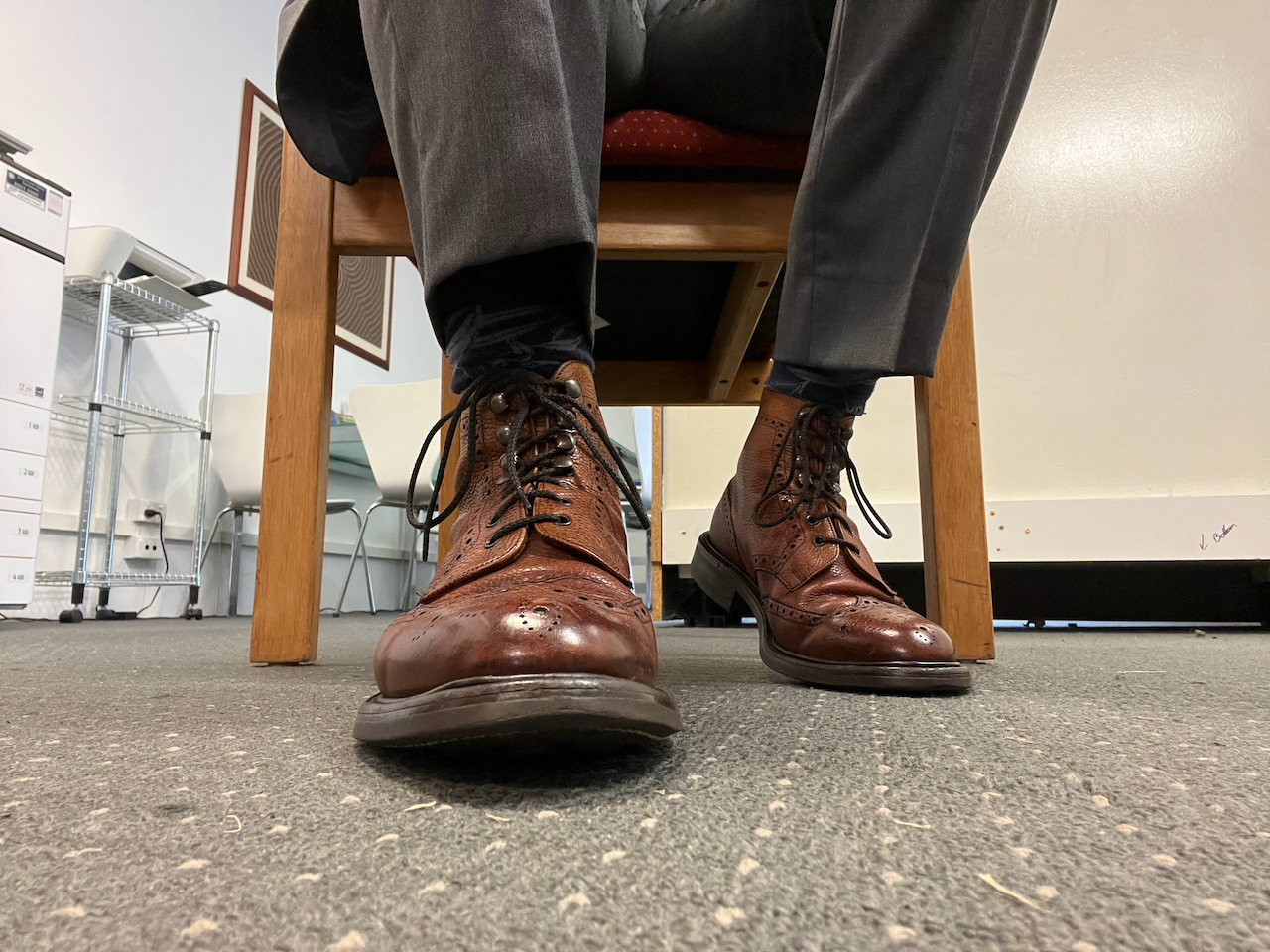
I’ve found it to cover up creasing and imperfections that develop as I wear the boot. These are now about 10 years old and you can see the patina and wear, but there’s very little reveal of creasing and wrinkling on the shaft of the boot, that’s way more apparent on smooth grain uppers.
These have obviously seen their share of regular conditioning and after all these years, the uppers have softened to become - well, glove-like! Really, really soft and comfortable.
They’re built around one of Cheaney’s roomier lasts, the 12508 last, if that means anything to you!
A last is of course, the foot-shaped mould that bookmakers pull the leather around to create the boot, in the shape of the last. So, a wider last, a wider boot. Despite the “wideness”, you can see the shape is pretty sleek and elegant when compared to North American round toebox boots. You couldn’t accuse say White’s or Red Wings to have as sleek a shape. While it’s comfy and wide around the ball of the foot, the heel is snug, and the surprisingly not pinching the toe since it is very almond-shaped.
I know the stiffeners used at the toe and in the heel counter in this pair are leather, but they have changed some of their manufacturing since COVID and I can’t find any reference in their current literature about whether they still are made from leather. The brogueing, the pinking, and the stitching to border the brogue holes is all very precise and accurate. The toe medallion is discreet, unlike the very large brogue holes in Grenson’s Fred boot.
The quarters are very generous. When you lace them up, the facings almost touch together making the Derby closure look almost like a formal Oxford closure. I have seen on social media, some “experts” tell newbies from photos that their boots are too big because the facings touch and should be at least an inch apart. That's untrue. Think about it - if you cut your quarters large, they will touch when you lace them up. Cut them smaller, and they’ll leave a bigger gap. It’s a physical characteristic of the size of the panel, and nothing to do with sizing.
The tongue is surprisingly gusseted only up to the second eyelet, quite low considering these were made to be capable of walking around a muddy field. As such, on my foot, it does slip slightly toward the outside of each foot. They are lightly padded though, so tying up the laces tight is no problem.
There are three antiqued brass eyelets and matching four speedhooks, which makes putting them on and taking them off a breeze.
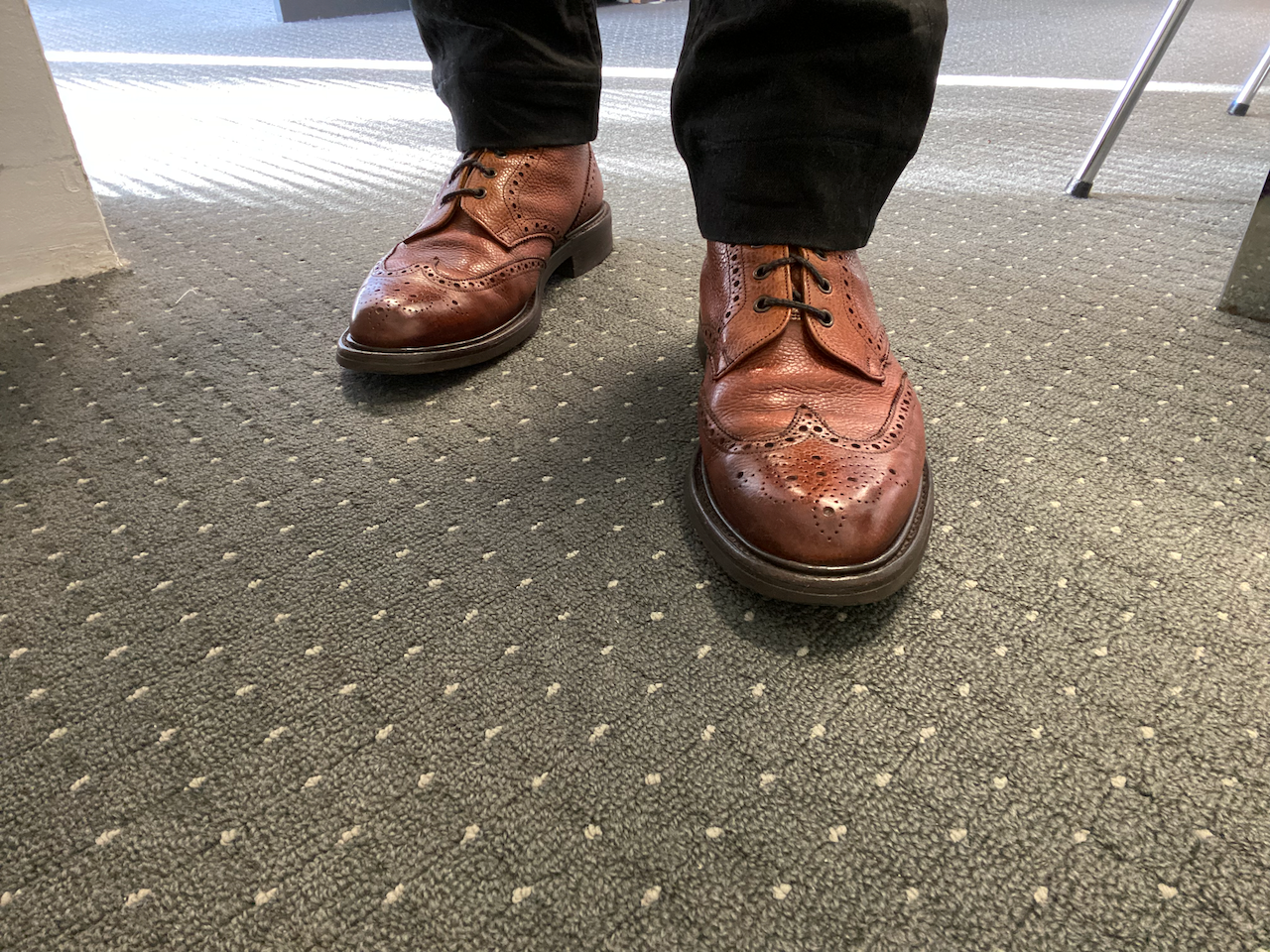
It’s probably the best combination because you can quickly undo the laces from their speed hooks and just prise open the facings at the eyelets and the shaft just opens up.
At the top, there’s a cloth pull loop, which if you have a pull loop, for dressy boots, is ideal because they fold out of the way without catching your pants.
LEATHERCARE
On Cheaney’s website, they talk about cream rather than conditioner. They recommend Saphir’s neutral Renovateur, and refer to it as a “moisturiser”. They suggest conditioning it with the neutral Renovateur, leaving it for ten minutes, and then buffing it off with a brush before putting on the coloured Renovateur the same way.
When I bought these from their Covent Garden store about 15 years ago, I didn’t know about Saphir, and to be honest, I was just using a light tan hard wax polish. That was my shoe care for probably 7 or 8 years, and when I finally learned enough about conditioning boots, I used a light, diluted alcohol solution to wipe away the old accumulation of wax and conditioned it with Venetian Shoe Cream.
Looking at the colour, I never thought it needed touching up, and I didn’t want to bugger up the hand-painted patina anyway, so I then just applied a thin smear of neutral cream from Tarrago as the protecting coat. Every now and then I’ve also put on a thin smear of neutral hard wax polish, applied using a slightly damp sponge, and then heartily brushing it to a shine.
I don’t think I’ve done any damage!
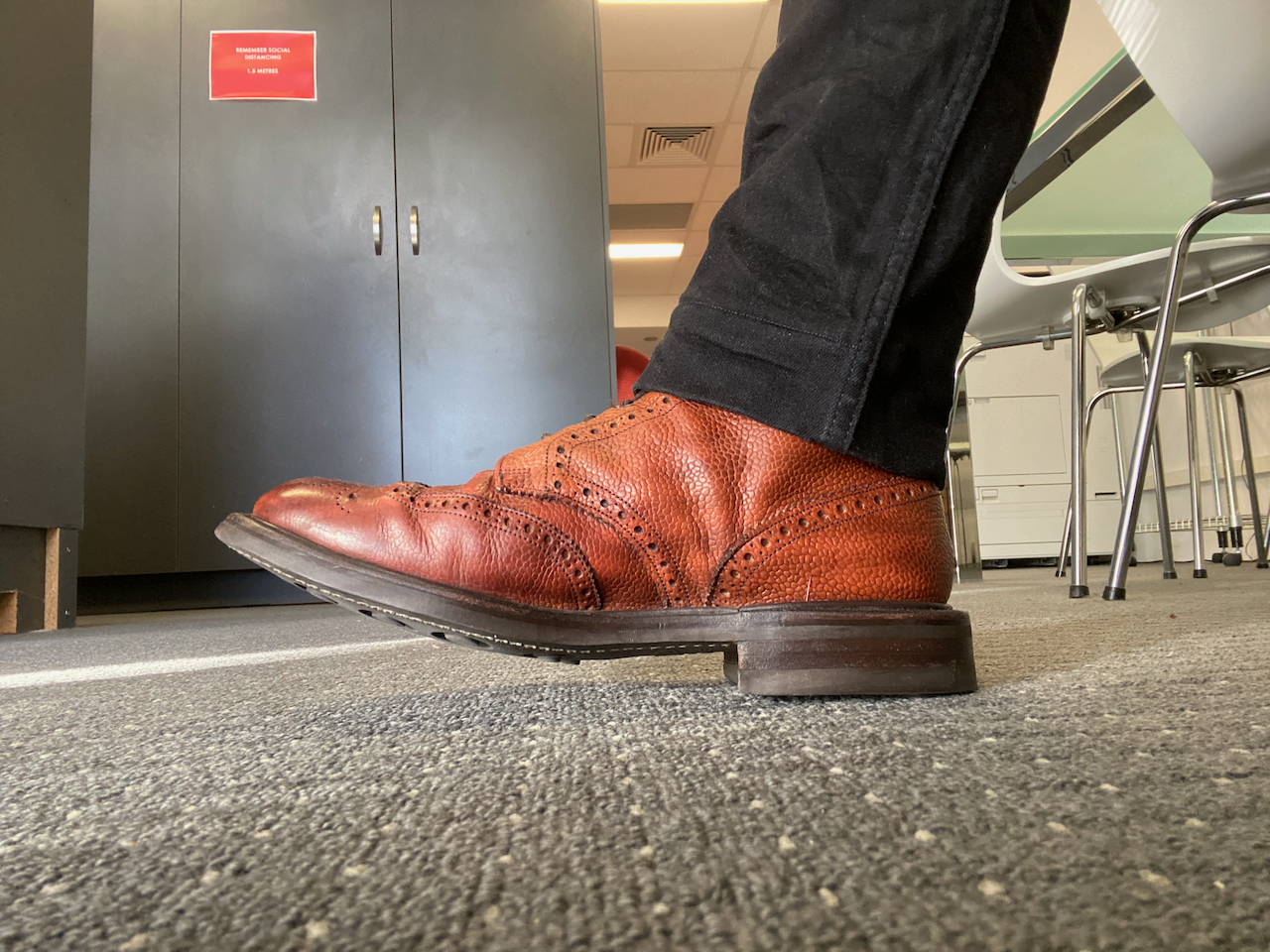
SIZING, FIT AND COMFORT
Cheaney, being an English company, uses the UK sizing format. The UK sizing format is one number down from the US sizing format. So, my true size as measured on a Brannock Device is a US 8 and a half in D width, which equates to a UK 7 and a half in average width. Width lettering in the UK system is a little anachronistic. The width letters used depend on the boot maker and theirs depend on what they called different widths years ago. So in the UK the US D width - or average - can be called a D by Clark’s, a G by Grenson, and an F by makers like Cheaney.
These boots are a 7 and a half in their F width (average width), meaning they fit true to size. In 7 and a half in F width, the heel and waist are snug, the ball of the feet are suitably wide, and the toe box is the right length and surprisingly for such an almond-shaped toe, does not squeeze at all. It’s a very comfortable fit, and the sole construction of leather and cork is also fantastic for comfort and shock absorption.
After ten or 15 years though, I’m beginning to feel the edges of the insole, so perhaps it’s almost time for a resole, even though the outsole is still in good nick. I may have just compressed the cork inside a bit much by now.
VALUE
Cheaney make the Tweed boot in a number of makeups, varying the uppers leather and the outsole, and they seem to call these a letter for variation. So for example they have the Tweed C, the Tweed R, and so on.
I didn’t see that variation in name at the store when I bought these so I’m not sure what these are. I can’t see this exact makeup on their website today and most of those I see have five eyelets and three speedhooks, so the pattern must have changed a bit, although I can’t tell any structural or design difference other than the hardware.
So all that is a precursor to say that you may not be able to get this exact boot. They now sell for the mid to high four hundred pounds. Ten or 15 years ago I bought these for the low 300 pounds. Typical of me, the week after I bought them, the same store had them for sale at below three hundred pounds.
So today, at over eight hundred Aussie dollars or about five hundred and fifty US dollars, they compare - IN PRICE - with Vibergs and White’s in American boots, and with the higher priced burnished and veal calf leather R M Williams Signature Craftsmen boots. I emphasise “in price” because you can’t compare apples with oranges, as in the case of White’s casual MP boots, but I guess they are nearer to Viberg’s stitch-down service boots, in that they are intended for wearing in the field and can be dressy. I’m not sure you might compare it with RM’s veal calf boots because if you had a pair of those, I’m pretty sure you’re not going to kick mud with them.
Anyway, taking that sort of comparison in place, they stack up pretty well.
I don’t think these are built as rugged as the Vibergs, but they do compare well in quality of materials and in the real leather used - perhaps not as thick in the sole construction. They compare a little less well against the RM’s in the veal leather, but I suspect the construction is better than the RM’s.
What else would you compare them with? I don’t have a pair of Tricker’s Stow boots which sell for up to a hundred pounds more. A similar boot from Grenson is their Fred boot, made in India, and selling for a hundred pounds less, and apart from not being made in the UK with the higher unit costs, I don't think are as good as these.
So using all those comparisons, these boots look like a fair price.
Value though?
I’ve had these ten to 15 years and look at the wear - really good.
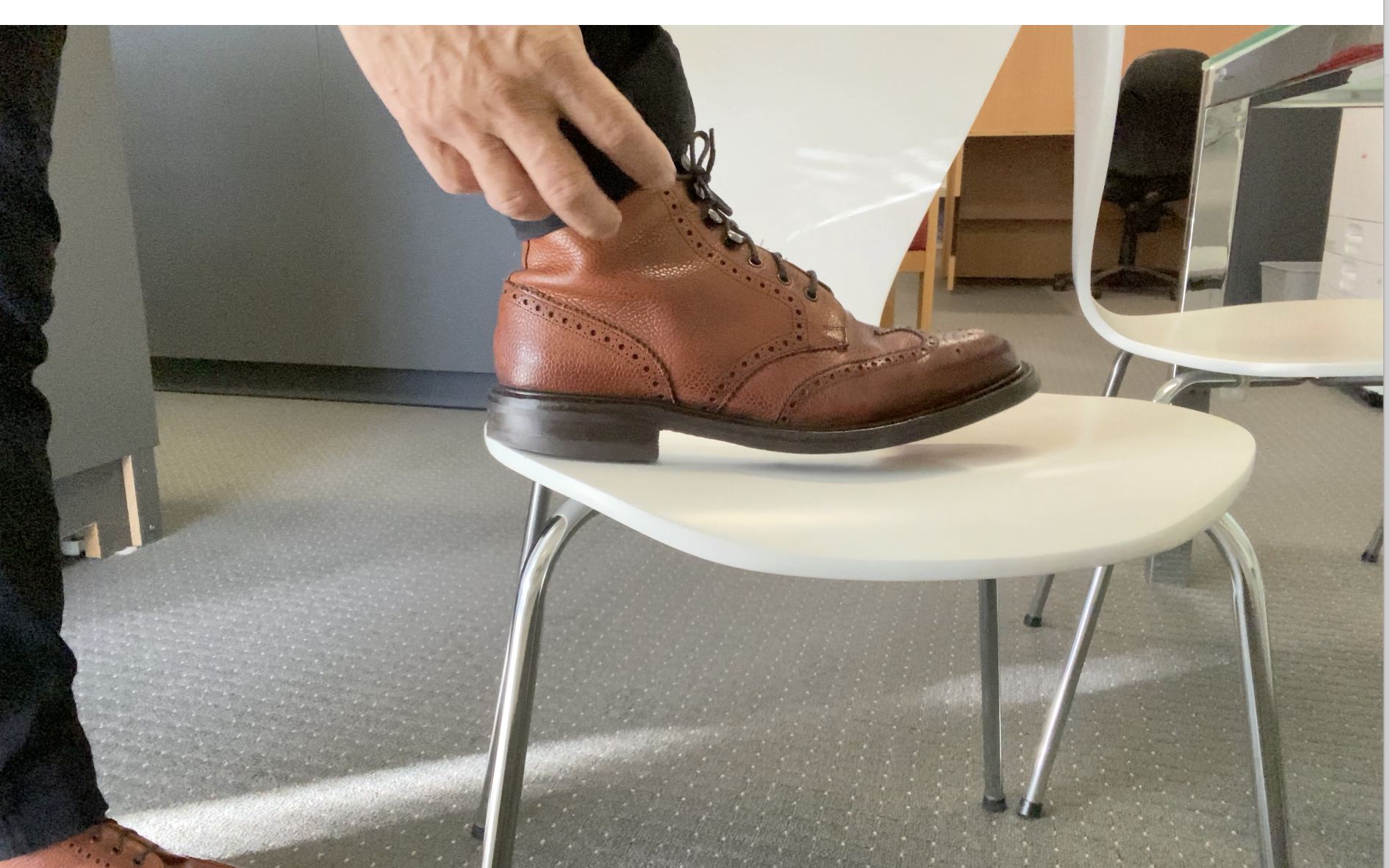
These are one of my few boots that I can say I’ve worn frequently, when, before the COVID age, I wore a suit to work every day and these at least twice a week. There's nothing wrong with them except maybe the Dainite heel is a little worn in the back corner, and the leather insoles may need replacement.
Stay connected with news and updates!
Join our mailing list to receive the latest news and updates from Bootlosophy.
Don't worry, your information will not be shared.
We hate SPAM. We will never sell your information, for any reason.
